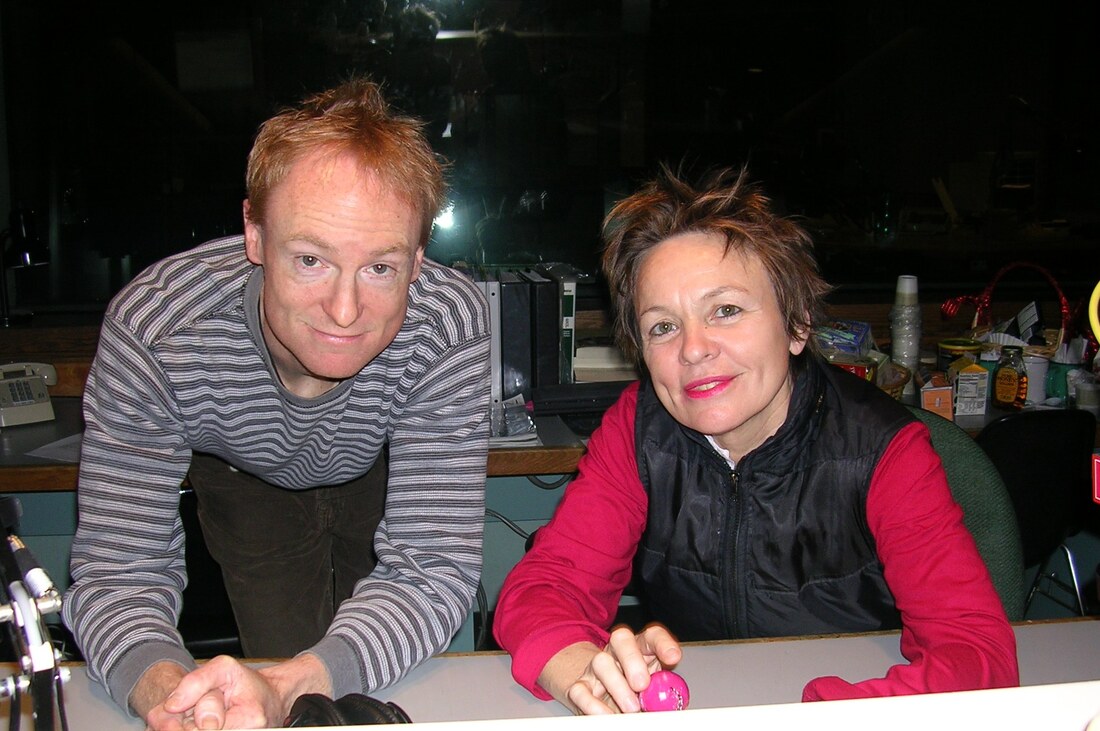|
They changed their minds. A week ago, WNYC announced it was terminating its familiar "New Sounds" program with John Schaefer. On Monday, Goli Sheikholeslami, the new president and CEO of New York Public Radio, announced that "New Sounds" and Schaefer and the long-time producer, Caryn Havlik, will be remaining.
In a gracious statement, Sheikholeslami said, "A show like New Sounds can only be produced by public radio, and specifically at NYPR." She recently resigned from her arts job in Chicago to take the leadership of New York Public Radio. Sheikholeslami's full statement on line can be read here: https://gothamist.com/arts-entertainment/reversal-wnyc-says-new-sounds-will-stay-airwaves The moral to the story is that sometimes new executives need to be reminded just what it is they are leading. Protesting is good, particularly in something as subjective as the arts. Donating (or not donating) also works. I am so happy for John Schaefer -- and for the eclectic audience of WNYC in the city that never sleeps. Here is my original article last week: I can’t remember where I was, but I definitely had the radio on, late one evening, listening to John Schaefer’s show, “New Sounds.” You never know what you will get. Schaefer seemed to find music from cultures all over the world, and within the United States – odd instruments, string and reed and percussion, plus the human voice at all pitches, and he would bubble about them, with junior-high-school enthusiasm. This night – he works best late in the evening – Schaefer introduced a trio performing the songs of Antonio Carlos Jobim but with unique arrangements, a blend of classic and bossa nova, familiar songs, carefully crafted. The album was “Casa,” performed by Ryuichi Sakamoto with his incisive, spare piano, and Jacques Morelenbaum, with his lush, sweeping cello, and vocalist Paula Morelenbaum, with her haunting Portuguese and charming almost lisping English. The songs were standards, from the basic Jobim playbook, but the interpretations were unique. I think Schaefer informed us that the album was recorded on the piano of the late Tom Jobim – in Jobim’s lakeside house in Rio. From what I read, Sakamoto felt awe at his pilgrimage to the home of the master, and had to ease into touching the piano. I was hooked, went out and bought the CD, which has become the most-played album on my iPod. A classic. That’s what John Schaefer does. He finds new releases, some of them flirting with commercial, some of them delightfully obscure, destined for one-time hearing, but in the memory bank, somewhere. A show like this would seem to have institutional permanence, particularly in polyglot multicultural New York. In fact, “New Sounds” lasted from 1982 until this week, when the new hatchet at WNYC announced that “New Sounds” is about to be disappeared. For what reason? They have a better replacement? “Why would they do that?” Laurie Anderson asked Michael Cooper in the Times on Monday. In the city that never sleeps, shouldn’t there remain a place for music you never heard before? Something that opens your mind and your ears? “New Sounds?” What does the “NY” in WNYC stand for? Thank you, John Schaefer, for the many years of “New Sounds” and please let your fans know about the next gig. * * * Bad news on the doorstep: https://www.nytimes.com/2019/10/11/arts/music/wnyc-new-sounds-schaefer.html?searchResultPosition=1 A review of "Casa" when it was new: https://www.latimes.com/archives/la-xpm-2002-aug-30-et-jazz30-story.html
Joshua Rubin
10/15/2019 08:19:52 pm
That's awful. I've picked up a lot of great music from New Sounds. One example is the Grand Valley State New Music Ensemble recording of Music for 18 Musicians, which I like better than th he original Reich recording.
George Vecsey
10/16/2019 01:36:47 pm
Josh: the great stuff I have heard from Schaefer -- Laurie Anderson, Brian Eno, Phillip Glass, Steve Reich, plus the ethnic stuff. Last summer we heard a dynamic group from Chad/Montreal, named H'Sao, loved them, at Saratoga, and I called Schaefer just to let him know these guys existed. He was enthusiastic, polite, and don't know if he ever caught up with their albums. But who else cares about that genre? GV
bruce
10/15/2019 08:24:43 pm
george,
George Vecsey
10/16/2019 01:33:49 pm
Bruce:
bruce
10/16/2019 01:38:26 pm
george,
Altenir Silva
10/16/2019 08:49:02 am
Dear George,
bruce
10/16/2019 09:01:05 am
altenir,
Altenir Silva
10/16/2019 09:10:11 am
Good point, Bruce.
George Vecsey
10/16/2019 01:39:32 pm
Dear Altenir: small world. Friend from Rio/Lisbon corresponding with a friend in Ontario, about to visit his favorite street in Paris. And what do we have in common? Leonard Cohen. Hallelujah! GV
bruce
10/16/2019 01:46:09 pm
george,
George
10/16/2019 06:43:40 pm
Bruce: totally agree on Lang.
bruce
10/16/2019 09:08:56 am
for the record i know that mis interpretation is one word in canada too.
bruce
10/16/2019 09:13:12 am
altenir,
bruce
10/16/2019 06:46:24 pm
george,
Gene Palumbo
10/17/2019 11:59:04 pm
A taste of Levon Helm:
Gene Palumbo
10/18/2019 04:37:02 am
Holy smokes! Bruce nailed it − twice!
bruce
10/18/2019 02:32:44 pm
bruce
10/18/2019 02:36:44 pm
gene,
Altenir Silva
10/21/2019 03:37:15 pm
Dear George, Comments are closed.
|
Categories
All
|











